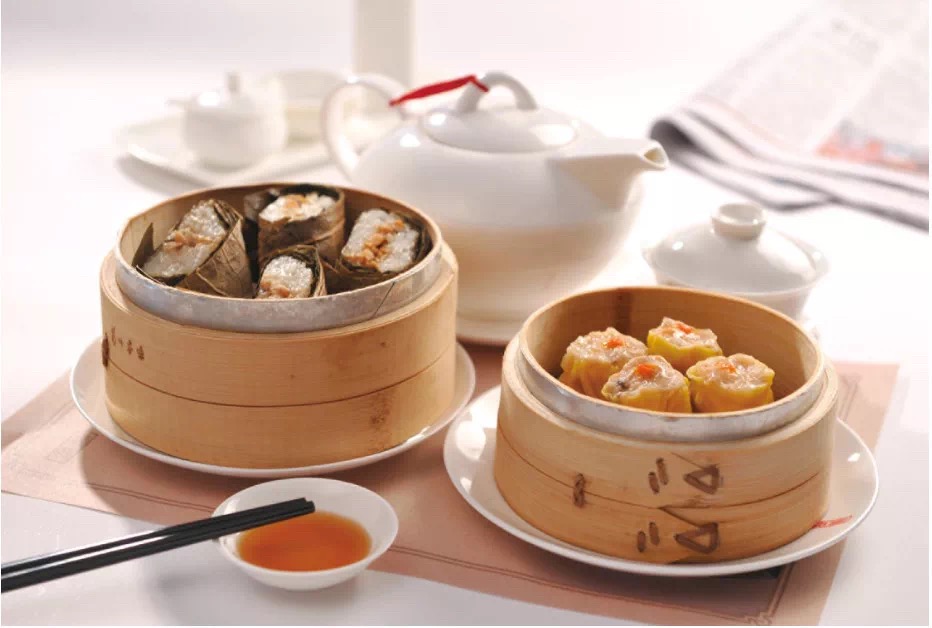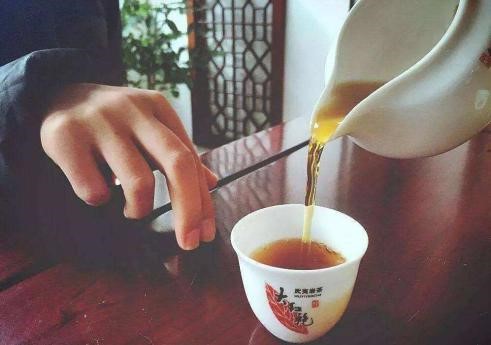China: a country with courtesy. Throughout history, Chinese people have often been often recognized as casual and gentle; however, they have a complicated and rigorous system of etiquette. As Confucius, the most honorable educator in China said over 2500 years ago — “No one can stand without etiquette.” Chinese people value manners in daily communication and even at the dinner table. For the next few minutes, let’s sit around the dining table and explore beneath the mysterious veil of Cantonese table manners.

Dim sum in Cantonese brunch
Cantonese people apply dining etiquette particularly in Cantonese Brunch, a meal when people have tea and dim sum with their families or friends, enjoying elaborate snacks made in small size. Students at GDUFS are involved in the charm of dim sum, too. These mouth-watering dim sum can be seen in the canteen, or the food ordered from the other restaurants. Some of these dim sum are from famous chain restaurants, like “Dian Du De,” while some may from other nearby restaurants. For example, YILIN holiday hotel at the South gate really makes tasty dim sum.
The origin of Cantonese Brunch dates back to the Qing Dynasty, when a kind of teahouses named “YI LI GUAN” appeared with the words “tea talk” written on a board in front of its door. “YI LI” was actually a term of payment, with the approximately value of a penny, while “GUAN” refers to the teahouse. This kind of teahouse only provided a few humble chairs and tables, and served customers low-cost tea and dim sum. It allowed passers-by to have a place to rest, a place to eat, or just simply a place to chat. As these small teahouses attracting more customers and became bigger and bigger, they gradually developed into a popular dining place known as “Cha Lou”, a symbol of Cantonese culture nowadays.
In the long run of history, tea became less important while dim sum has developed in many different directions. At the beginning, they were just peanuts or some cakes made from rice. But as people’s lives got better, dim sum has been made with more different shapes and various materials. While eating dim sum, people not only have enjoyed a tasty feast, but also inherited the complex system of dining manners embedded in Cantonese culture.
Cantonese people insist on etiquette in the process of steeping tea. When pouring tea for the guest, it’s suggested to stop as tea fills up two thirds of the cup; meanwhile, pressing the teapot lid can prevent it from slipping off and scalding people’s hands. Next, people start to taste the tea instead of drinking bottoms up. To taste the tea, people pinch the tea cup with their thumb and forefinger, savor the fragrance with their nose, and sip slowly over the brim. Although this whole process is strict with traditional etiquette, people still believe that by following such procedures, they can show their persistence as inheritors of a long tradition of tea drinking.

On-hand Kowtow Salute
Apart from the manners mentioned above, on-hand Kowtow Salute is also an action that displays tea etiquette. To do this, people will stretch out their forefinger and middle finger and tap the table with gentle strength three times. The on-hand Kowtow Salute also originated during the Qing dynasty. Folk tale has it that when Emperor Qianlong paid a visit incognito to Gangnam, the south regions of the Yangtze River, he accepted an officer’s on-hand Kowtow Salute in a tea house. Thereafter, the on-hand Kowtow Salute was handed down for generations because citizens would like to learn this etiquette and show their politeness at the table. At present, the on-hand Kowtow Salute not only conveys the message of having received respect from others, it also expresses gratitude in an implicit way, sharing the common humbleness and courtliness of Chinese culture.
The Book of Rites, one of the most ancient and prominent classics in China, mentioned that the difference between human beings and animals isn’t languages, but etiquette, which distinguishes civilization from barbarism. And that’s the reason why etiquette plays such a dominant role in the daily life of Chinese people: as a means to convey human communication, social harmony, and adherence to traditional dining etiquette. The etiquette in Cantonese Brunch is just the tip of iceberg. If you observe carefully, bit by bit, you will find a whole new world of Chinese etiquette unfolding before you.

